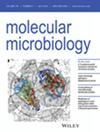Future Directions of the Prokaryotic Chromosome Field
IF 2.6
2区 生物学
Q3 BIOCHEMISTRY & MOLECULAR BIOLOGY
引用次数: 0
Abstract
In September 2023, the Biology and Physics of Prokaryotic Chromosomes meeting ran at the Lorentz Center in Leiden, The Netherlands. As part of the workshop, those in attendance developed a series of discussion points centered around current challenges for the field, how these might be addressed, and how the field is likely to develop over the next 10 years. The Lorentz Center staff facilitated these discussions via tools aimed at optimizing productive interactions. This Perspective article is a summary of these discussions and reflects the state‐of‐the‐art of the field. It is expected to be of help to colleagues in advancing their own research related to prokaryotic chromosomes and inspiring novel interdisciplinary collaborations. This forward‐looking perspective highlights the open questions driving current research and builds on the impressive recent progress in these areas as represented by the accompanying reviews, perspectives, and research articles in this issue. These articles underline the multi‐disciplinary nature of the field, the multiple length scales at which chromatin is studied in vitro and in and highlight the differences and similarities of bacterial and archaeal chromatin and chromatin‐associated processes.原核生物染色体领域的未来发展方向
2023年9月,原核生物染色体的生物学和物理学会议在荷兰莱顿的洛伦兹中心举行。作为研讨会的一部分,与会人员围绕该领域当前面临的挑战、如何解决这些挑战以及该领域在未来10年可能如何发展展开了一系列讨论。洛伦兹中心的工作人员通过旨在优化有效互动的工具促进了这些讨论。这篇透视文章是这些讨论的总结,反映了该领域的最新进展。希望对同行推进原核染色体的相关研究和激发新的跨学科合作有所帮助。这一前瞻性的观点突出了推动当前研究的开放性问题,并建立在这些领域令人印象深刻的最新进展的基础上,这些进展由本期的评论、观点和研究文章所代表。这些文章强调了该领域的多学科性质,在体外和体内研究染色质的多个长度尺度,并强调了细菌和古细菌染色质以及染色质相关过程的差异和相似性。
本文章由计算机程序翻译,如有差异,请以英文原文为准。
求助全文
约1分钟内获得全文
求助全文
来源期刊

Molecular Microbiology
生物-生化与分子生物学
CiteScore
7.20
自引率
5.60%
发文量
132
审稿时长
1.7 months
期刊介绍:
Molecular Microbiology, the leading primary journal in the microbial sciences, publishes molecular studies of Bacteria, Archaea, eukaryotic microorganisms, and their viruses.
Research papers should lead to a deeper understanding of the molecular principles underlying basic physiological processes or mechanisms. Appropriate topics include gene expression and regulation, pathogenicity and virulence, physiology and metabolism, synthesis of macromolecules (proteins, nucleic acids, lipids, polysaccharides, etc), cell biology and subcellular organization, membrane biogenesis and function, traffic and transport, cell-cell communication and signalling pathways, evolution and gene transfer. Articles focused on host responses (cellular or immunological) to pathogens or on microbial ecology should be directed to our sister journals Cellular Microbiology and Environmental Microbiology, respectively.
 求助内容:
求助内容: 应助结果提醒方式:
应助结果提醒方式:


